Thread the Needle Stretch: Benefits, Muscles Worked, and More
For a wide-reaching and highly versatile mobility exercise, few can compare to the thread the needle stretch.
In essence, thread the needle is an upper body stretch making use of a wide myriad of different biomechanics - most prominent of which are arm extension, shoulder rotation and rotation of the entire torso itself.
If you suffer from poor mobility and tension of the shoulders, upper back, neck, chest or arms - then the thread the needle stretch is the right exercise for you.
What is the Thread the Needle Stretch?
In technical terms, thread the needle can be classified as a multi-joint dynamic active stretch primarily used in a rehabilitative capacity.
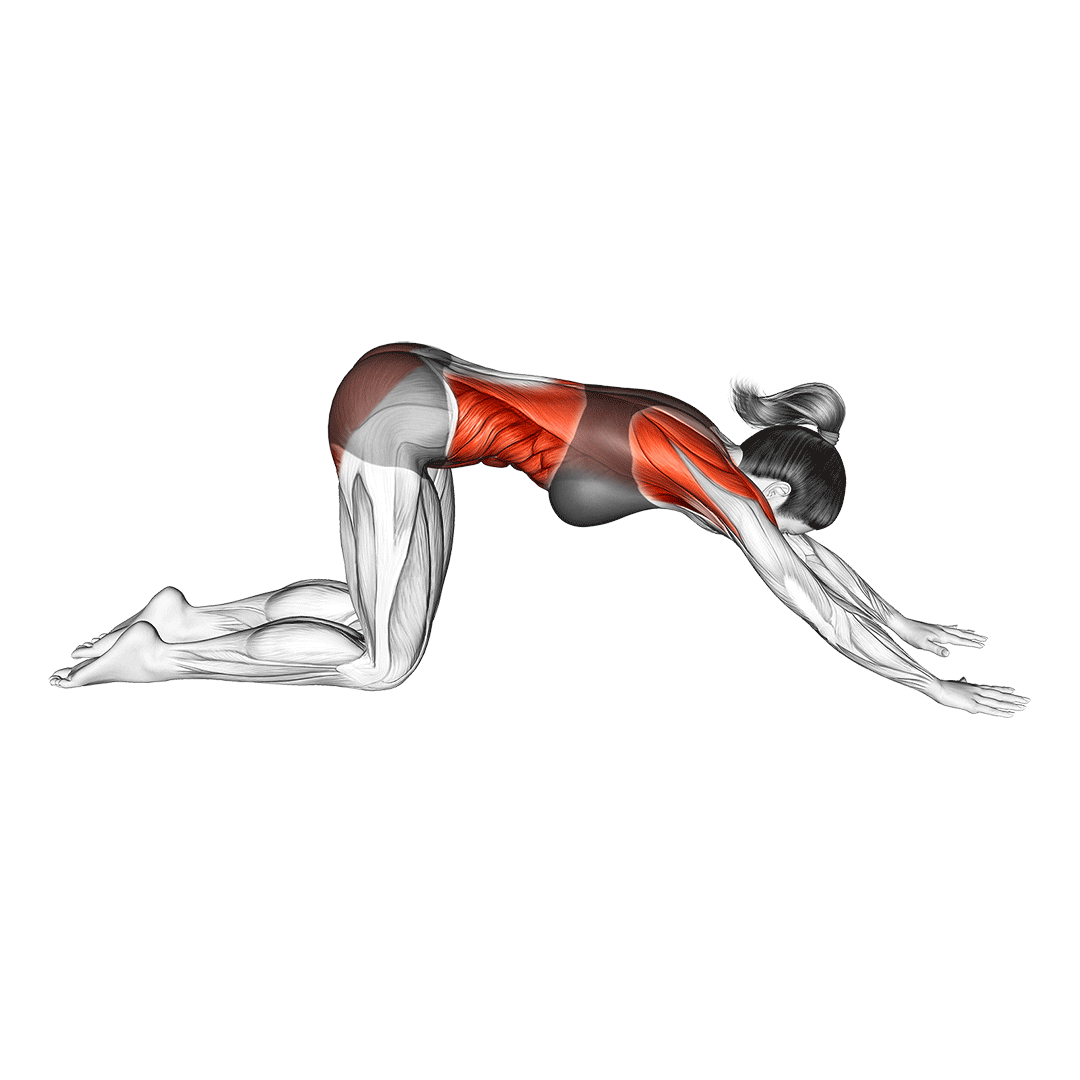
When performed, the thread the needle exercise places the exerciser on hands and knees as they raise one hand and “thread” it through the space formed between their legs and the opposite arm, twisting the torso as they do so.
This particular mobility exercise is very low-impact and considered to be quite safe. However, some level of twisting of the spine is present, and as such it may not be the most appropriate movement for individuals who suffer from spine or back issues.
How to Do a Thread the Needle Stretch
To perform the thread the needle stretch, the exerciser will begin by lying on the floor in the tabletop stance - hands and knees on the ground.
The hands should be parallel to the shoulders with the elbows fully extended, and the knees approximately parallel to the pelvis.
From this stance, the exerciser then rotates one hand palms-up before slowly moving it through the space between the remaining arm and their legs.
The head should follow this direction as the torso also rotates alongside the moving arm.
With the arm fully extended across the torso to the side, the exerciser lowers at the shoulders and elbow until the chest is nearly touching the ground. The hips should remain in place as this occurs.
Once reaching the limits of their mobility, the exerciser may hold this twisted position for several seconds before reversing the movement and following through by raising the arm immediately upwards. The torso, once again, should follow this movement as well.
From this point, the arm is returned to its original position beneath the shoulders, palms-down. Repeat with the opposite side as well.
Remember to perform this entire sequence in a slow and relaxed manner. Avoid rushing through the movement or immediately dropping the torso towards the ground.
What Joints and Muscles are Targeted by the Thread the Needle Exercise?
The thread the needle stretch targets quite a few structures throughout the upper body.
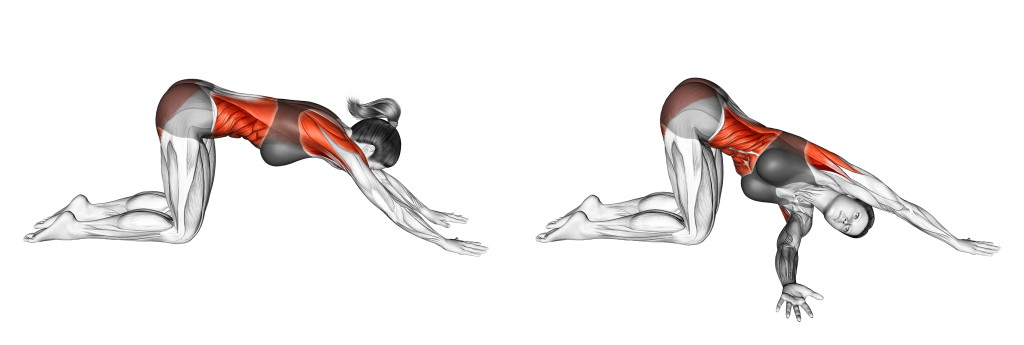
In terms of skeletal muscles, the trapezius, deltoids, pectorals, latissimus dorsi, rhomboids, teres minor and major, infraspinatus and the muscles of the neck are all targeted to a significant range.
Furthermore, the joints of the shoulders, the thoracic and cervical spine as well as the elbows are all dynamically involved.
What are the Benefits of the Thread the Needle Stretch?
Apart from general relaxation and health improvements, thread the needle also offers the following functional benefits.
Effective Dynamic Upper-Body Stretch
Dynamic stretches are often preferred by athletes due to the purportedly lesser effectiveness of static stretches.
With how many muscles, tendons and joints are worked by the thread the needle stretch, this can save athletes time and energy prior to a grueling workout session.
In particular, dynamic stretches of the upper body are noted for being especially important as a deterrent of injury in weightlifting and similarly high-tension activities. Injuries to the shoulders, spine and upper back are common among individuals who participate in such activity without prior mobility work.
Can be Modified Into a Static Stretch
A major benefit of the thread the needle stretch is its ability to be paused at certain points in the movement pattern. This effectively allows it to turn into a static stretch - of which is superior for maximizing a muscle’s range of mobility and facilitating blood flow to the area being stretched.
Mobilizes the Upper Back and Shoulder Structure
A stiff neck, tense mid-back or poor shoulder mobility are all common complaints among sedentary individuals that regularly remain seated for extended periods. This is because the thoracic (middle) and cervical (upper) sections of the spine will often stay in a disadvantageous curvature throughout such periods.
The thread the needle exercise is excellent for alleviating pressure and symptoms related to these issues in a low-impact manner.
When performed slowly and with intention, the spine, shoulder joint and other nearby soft tissue structures are all gently lengthened within a healthy range.
Can Function as Both a Warm-Up and Cool-Off
Because the thread the needle stretch can function as both a dynamic and static stretch, it can effectively be employed in both warm-up and cool-off routines respectively.
To use thread the needle as a warm-up, perform it without pausing at any point during the movement pattern. Remember to do so in a slow and mindful manner.
On the other hand, to employ it for cooling off, it is best to remain in a static position at points that were recently exercised. If a back workout was just completed, for example, then remain with the arm “threaded” and the chest near the floor. This will effectively stretch the back muscles in a static manner.
Common Thread the Needle Stretch Mistakes
Although the thread the needle stretch is quite safe to perform, avoid the following mistakes so as to minimize any risk of injury.
Pushing the Pelvis Forwards
During the stretch, the hips should remain roughly stationary and pointed up into the air over the knees.
A common mistake is to move the hips forwards as the torso descends towards the ground, altering the mechanics of the exercise and reducing how far the back muscles are stretched.
As much as possible, keep the pelvis stationary throughout the entire stretch.
Curving the Back and Spine
In order to avoid placing excess pressure on the spinal column, exercisers performing the thread the needle stretch should keep their lower back as flat as possible. If familiar with how to keep the spine in a neutral curvature, this should be employed as well.
Otherwise, if unfamiliar, the exerciser should keep their core slightly braced and ensure that their upper back is not rounding during the stretch.
Leading With the Shoulder
When turning the torso to thread the arm or raise it up, the arm itself should be the first part of the body moving. Avoid leading the motion with the shoulder, as this can lead to excessive internal rotation and affect how well the pectoral muscle is stretched.
Shifting Weight Towards Hands
In order to prevent the exercise from becoming a faux push-up, keep the body’s weight centered on the lower body. Distribute it through the knees and ensure the hips are in proper alignment so as to prevent its weight from shifting towards the upper body.
If pressure is felt in the elbows, wrists or hands during the stretch - then it is likely the pelvis is shifting forwards or the exerciser is not distributing their weight correctly.
Alternatives to the Thread the Needle Pose
If the thread the needle pose is too dynamic for your liking - or requires too many steps - try the following alternative stretches out.
Across the Chest Rear Deltoid Stretch
Otherwise known as simply the “rear deltoid stretch”, this particular alternative features a similar movement pattern in terms of shoulder, back and arm positioning.
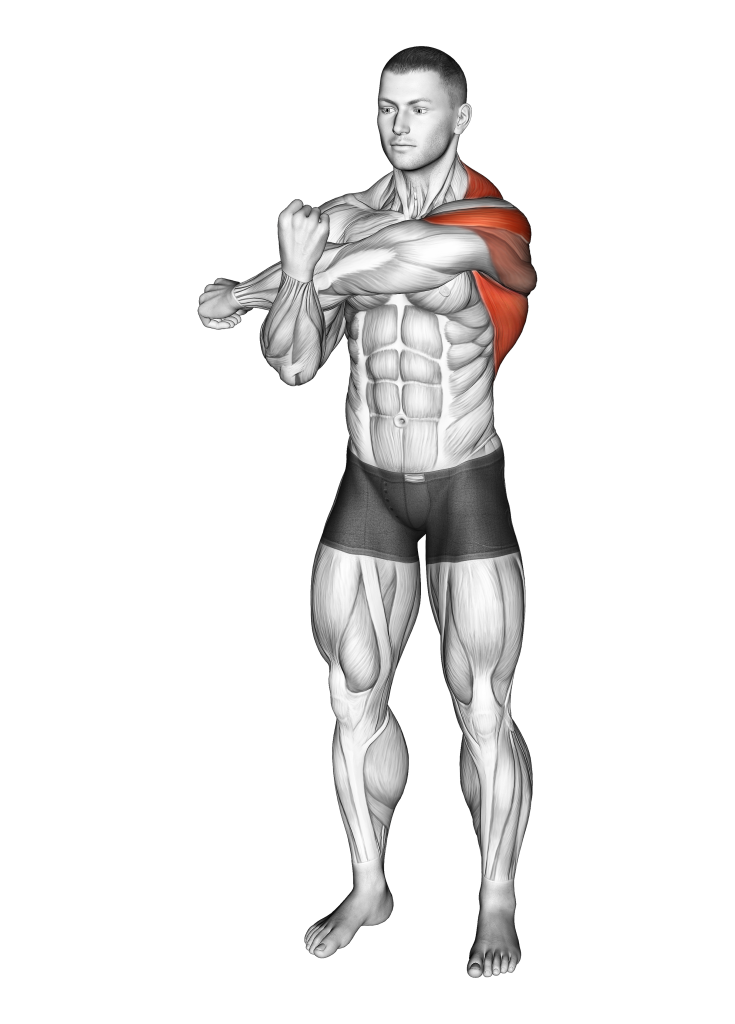
However, unlike the thread the needle stretch, the rear deltoid stretch can be performed in a standing position and largely concentrates its effects on the upper back and the posterior section of the shoulders - creating a far more convenient and localized exercise.
Kneeling Lat Stretch
The kneeling lat stretch is a similarly wide-reaching mobility exercise that has the exerciser extending their arms forwards before they lower their torso downwards, replicating the starting pose of thread the needle but with greater emphasis on the back.
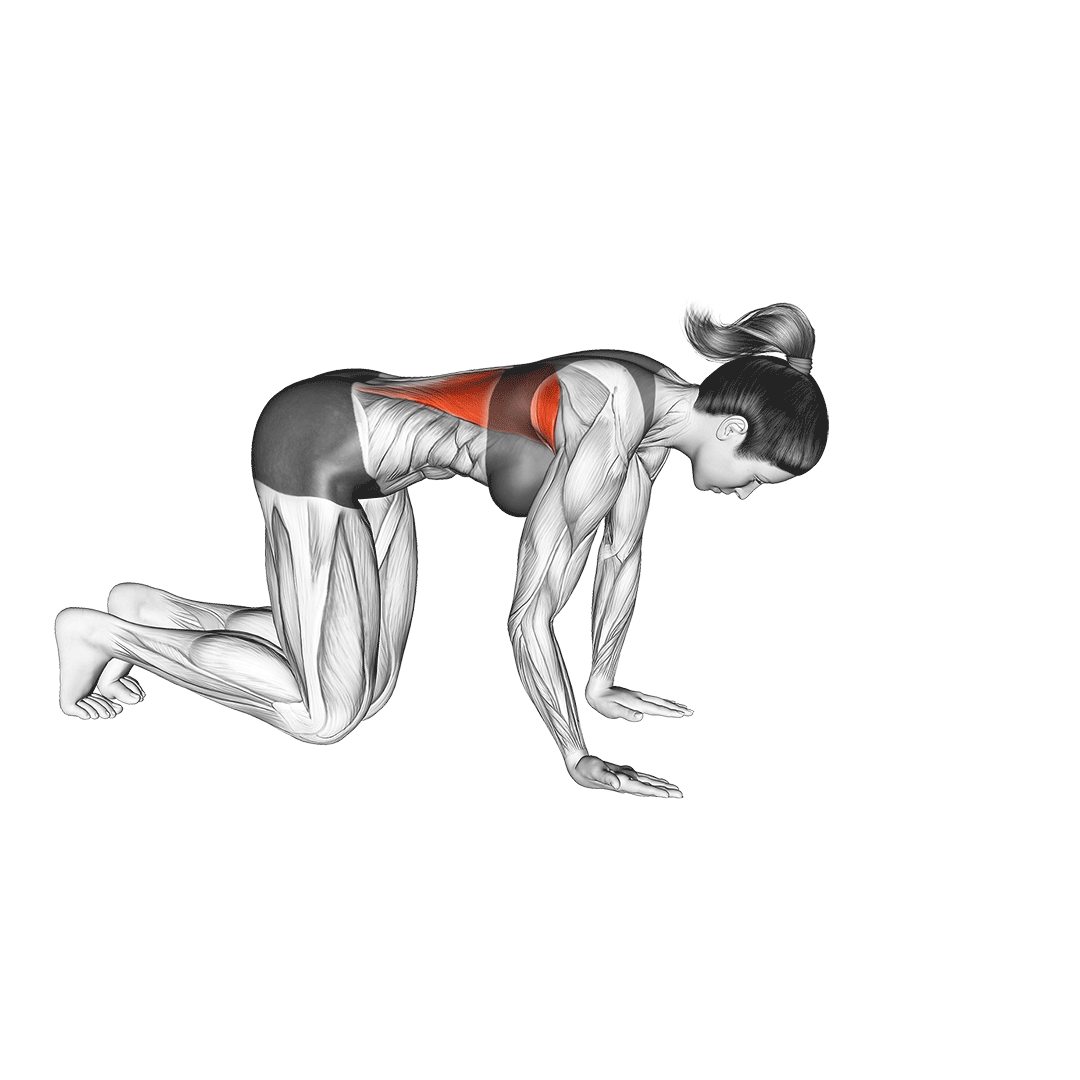
Use kneeling lat stretches as an alternative to thread the needle is ideal for exercisers that wish to avoid significant movement of the shoulder joint and arms.
Child’s Pose
The child’s pose is essentially a predecessor to the thread the needle exercise - replicating its stance but with no twisting of the back. Instead, the head is brought as close to the floor as possible, with the arms extended forwards and the chest atop or close to the knees.
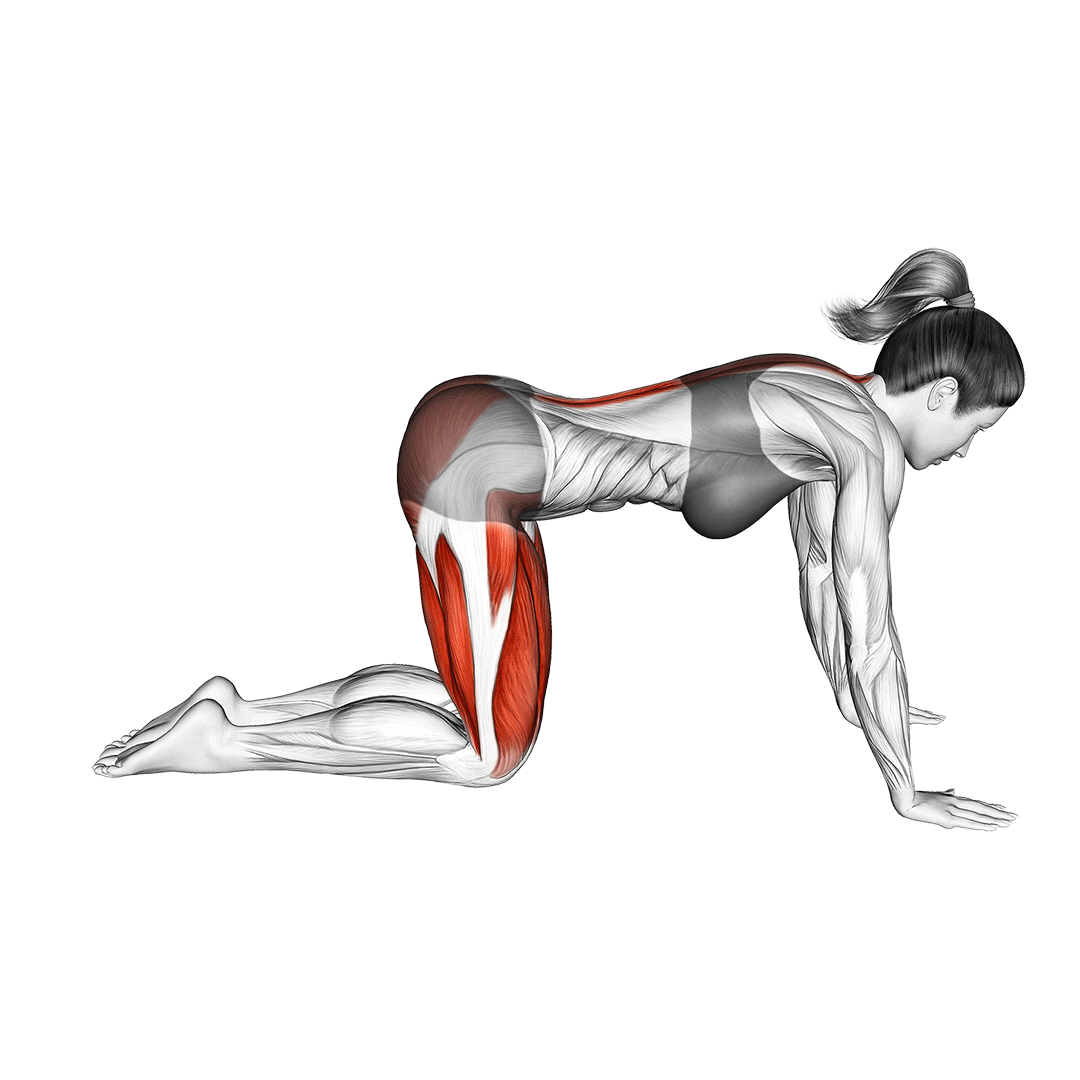
The child’s pose is a basic static stretch in yoga, and forms the baseline of many more advanced poses and dynamic mobility exercises.
Frequently Asked Questions (FAQ)
What is the Thread the Needle Pose Called?
In yoga, the “thread the needle” pose is referred to as Parsva Balasana, which can also translate to “eye of the needle”.
Parsva Balasana is a graduation from the more basic Balasana or child’s pose, and takes much of its starting positioning and pose from the latter stance.
Can Pregnant Women do the Thread the Needle Stretch?
Yes - low-impact and gentle stretches like thread the needle are excellent for expecting mothers. Adjust the pose to compensate for the extra weight along the abdomen as needed.
Remember to first speak to your physician prior to attempting exercise, however.
What Does the Thread the Needle Exercise do?
The thread the needle exercise will stretch your back, arms, chest and shoulders in a single fluid and low-impact movement. In addition, it is excellent for gently stretching the thoracic and cervical spine - as well as the neck and shoulder girdle.
In Conclusion
Thread the needle is a classic movement in a wide variety of different disciplines, be it yoga or pre-weightlifting warm-up routines. It targets practically every major portion of the upper body in a dynamic manner - making it perfect for various training or rehabilitative purposes.
For a truly full-body mobility routine, don’t forget to also combine thread the needle with stretches that target the lower body.
References
1. Wikipedia contributors, "Balasana," Wikipedia, The Free Encyclopedia, https://en.wikipedia.org/w/index.php?title=Balasana&oldid=1161412666 (accessed September 3, 2023).
2. Hanoch, Doron. ( June 8, 2016) The Yoga Lifestyle: Using the Flexitarian Method to Ease Stress, Find Balance, and Create a Healthy Life. United States: Llewellyn Worldwide, Limited, 2016. ISBN: 9780738750521, 0738750522

